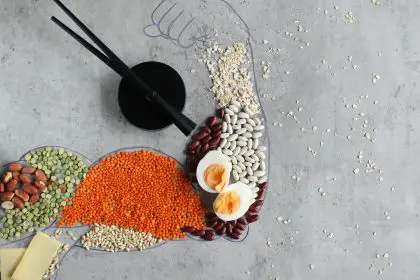The science behind glucagon-like peptide-1’s metabolic effects
When food enters the digestive system, specialized cells in the small intestine release GLP-1, initiating a cascade of metabolic responses. This hormone serves as a crucial messenger, signaling the pancreas to release insulin while simultaneously suppressing glucagon production. Beyond blood sugar regulation, it acts on the brain’s appetite centers and slows gastric emptying, creating a natural feeling of satisfaction after meals.
Understanding the limitations of dietary intervention
While prescription medications can dramatically increase its levels for extended periods, dietary approaches work differently. Natural GLP-1 released through food intake remains active for approximately 15-30 minutes in the bloodstream. This shorter duration means that strategic meal planning becomes essential for maintaining steady hormone levels throughout the day.
Protein: The cornerstone of natural production
Research indicates that protein consumption stands out as one of the most effective dietary triggers for GLP-1 release. The amino acids in protein-rich foods stimulate intestinal cells to produce this important hormone, while simultaneously providing building blocks for muscle maintenance and repair.
For optimal results, nutrition experts recommend consuming 20-30 grams of protein at each meal. This typically translates to:
- 3-4 ounces of lean meat, fish, or poultry
- 1 cup of Greek yogurt with a scoop of protein powder
- 1 cup of cottage cheese with fruit
- 3 eggs with whole grain toast
- 1 cup of lentils with quinoa
The fiber factor: Amplifying glucagon-like peptide-1 response
Dietary fiber works synergistically with protein to enhance GLP-1 production. Soluble fiber, in particular, creates a gel-like substance in the digestive tract that slows nutrient absorption and prolongs the release of GLP-1. High-fiber foods that support this process include:
- Oats and barley
- Legumes and pulses
- Apples and pears
- Brussels sprouts
- Chia seeds and flaxseeds
The role of healthy fats in hormone regulation
Incorporating healthy fats into meals can further optimize GLP-1 release. These fats not only slow digestion but also provide essential nutrients that support overall metabolic health. Beneficial sources include:
- Extra virgin olive oil
- Avocados
- Nuts and seeds
- Fatty fish rich in omega-3s
- Coconut oil in moderation
Timing matters: Strategic meal planning for maximum impact
To maintain steady GLP-1 levels throughout the day, consider these timing strategies:
- Start with a protein-rich breakfast within an hour of waking
- Space meals 4-5 hours apart to allow proper hormone cycling
- Include protein and fiber at each meal
- Consider a small evening snack combining protein and complex carbohydrates
The gut microbiome connection
Emerging research suggests that gut bacteria may influence production and sensitivity. Supporting a healthy microbiome through fermented foods can enhance this effect:
- Plain yogurt
- Kefir
- Kimchi
- Sauerkraut
- Kombucha
Building sustainable habits for long-term success
Creating a sustainable approach to GLP-1 optimization requires careful planning and preparation. Consider these practical strategies:
- Meal prep protein portions in advance
- Stock freeze-dried fruits for fiber-rich snacks
- Prepare overnight oats with protein powder
- Keep pre-portioned nuts and seeds readily available
- Maintain a supply of prepared legumes in the refrigerator
Lifestyle factors that complement dietary changes
While food choices significantly impact GLP-1 levels, other lifestyle factors can enhance their effectiveness:
- Regular physical activity
- Adequate sleep
- Stress management
- Consistent meal timing
- Proper hydration
The importance of professional guidance
Before making significant dietary changes, consulting with healthcare providers remains essential. This becomes particularly important for individuals with:
- Diabetes or pre-diabetes
- Digestive disorders
- Kidney disease
- History of eating disorders
- Current medication regimens
Creating a balanced approach
Optimizing GLP-1 levels through diet requires a balanced, sustainable approach that fits individual lifestyles and preferences. Focus on incorporating whole, minimally processed foods while maintaining realistic expectations about results compared to medication-based interventions.
Looking ahead: The future of natural GLP-1 optimization
Research continues to uncover new connections between dietary choices and hormone regulation. As our understanding grows, additional strategies for natural GLP-1 optimization may emerge, providing more options for those seeking alternatives to prescription medications.
Ultimately, while dietary approaches may not replicate the dramatic effects of GLP-1 medications, they offer a sustainable, health-promoting way to support natural hormone production and overall metabolic health. By implementing these evidence-based strategies and maintaining consistency, individuals can work toward optimizing their body’s own GLP-1 production while building lasting healthy habits.
















